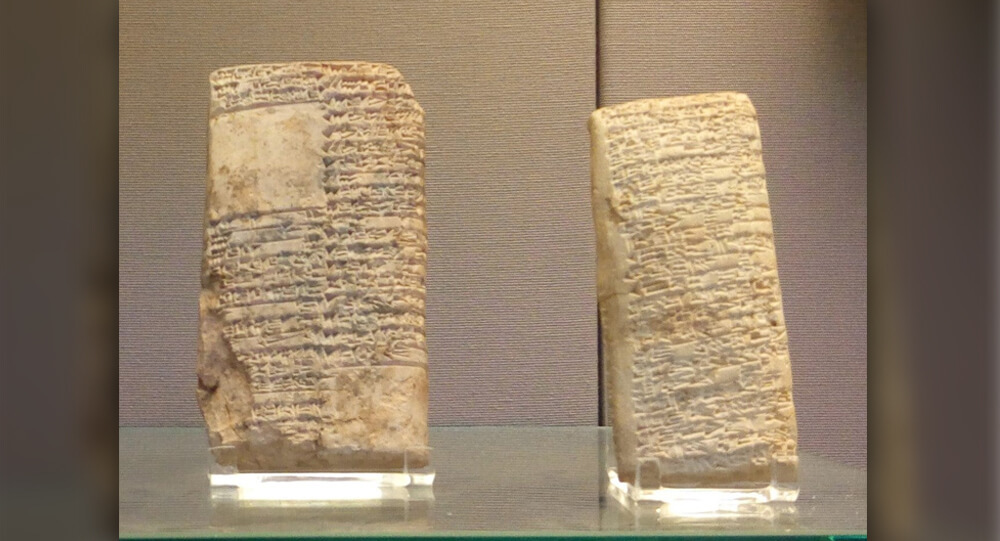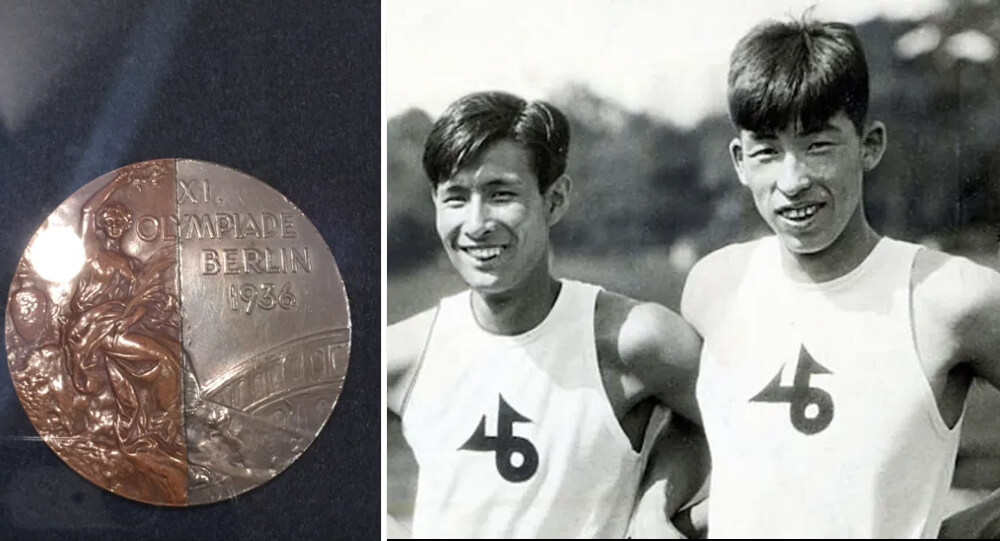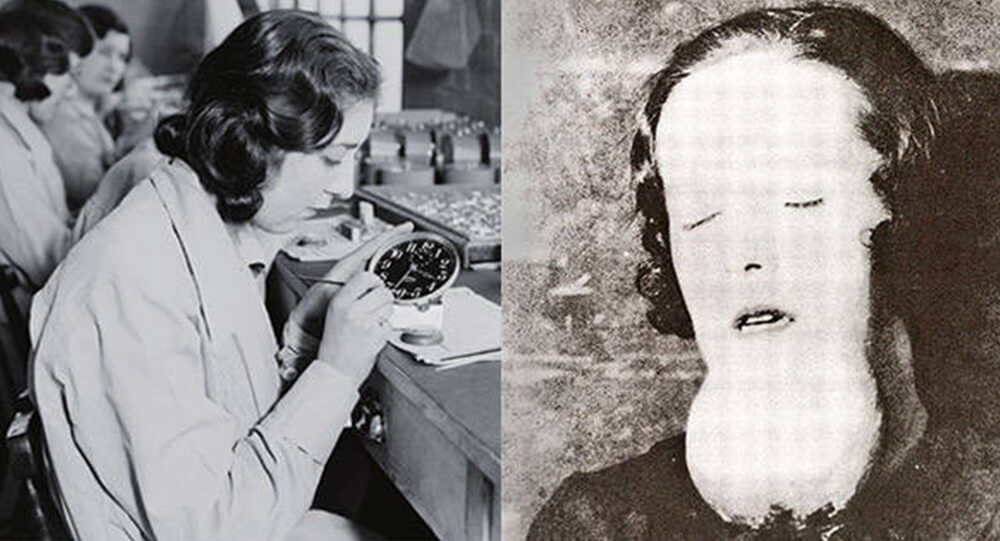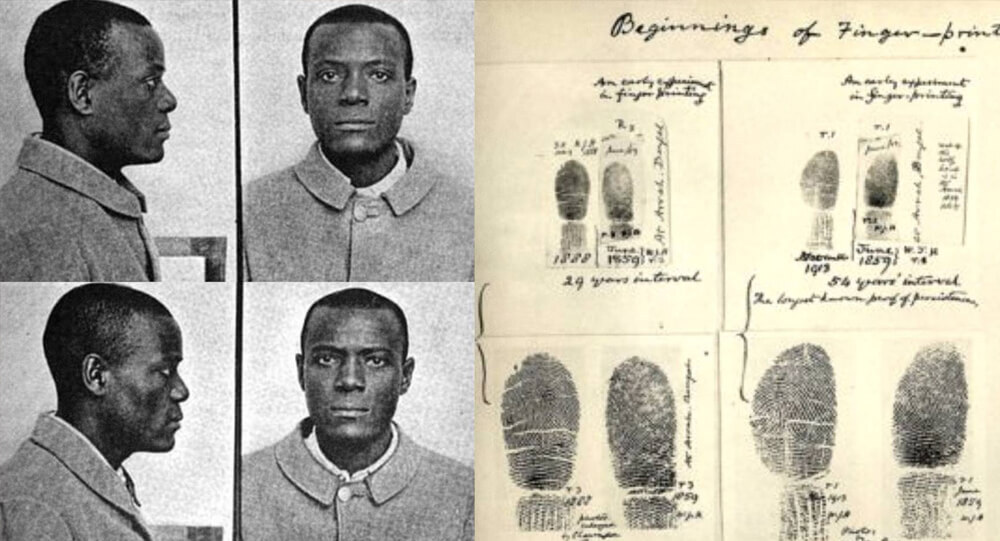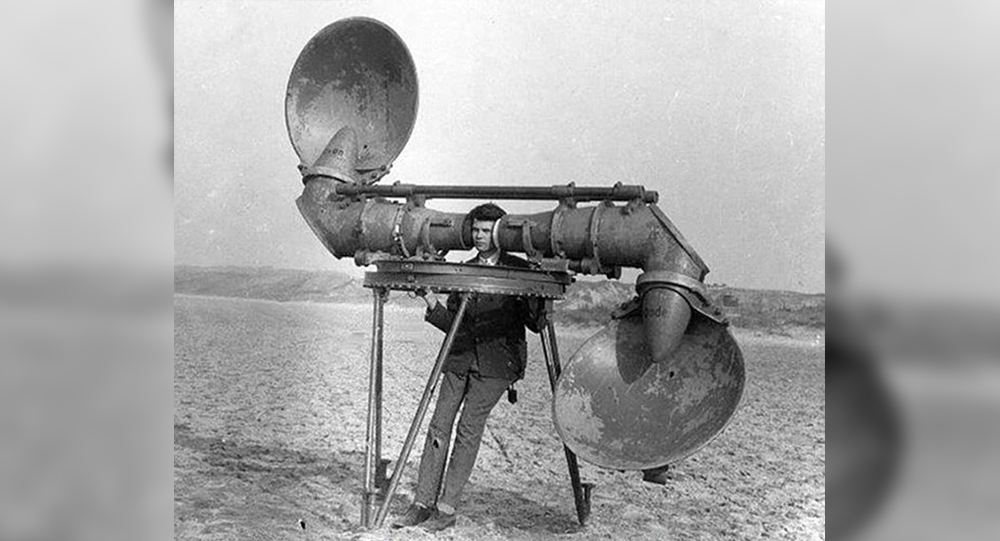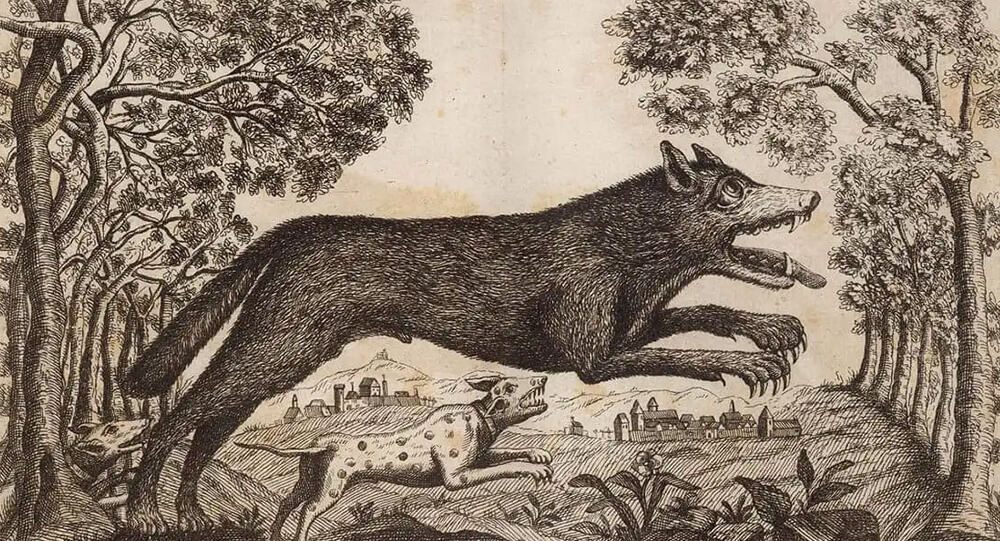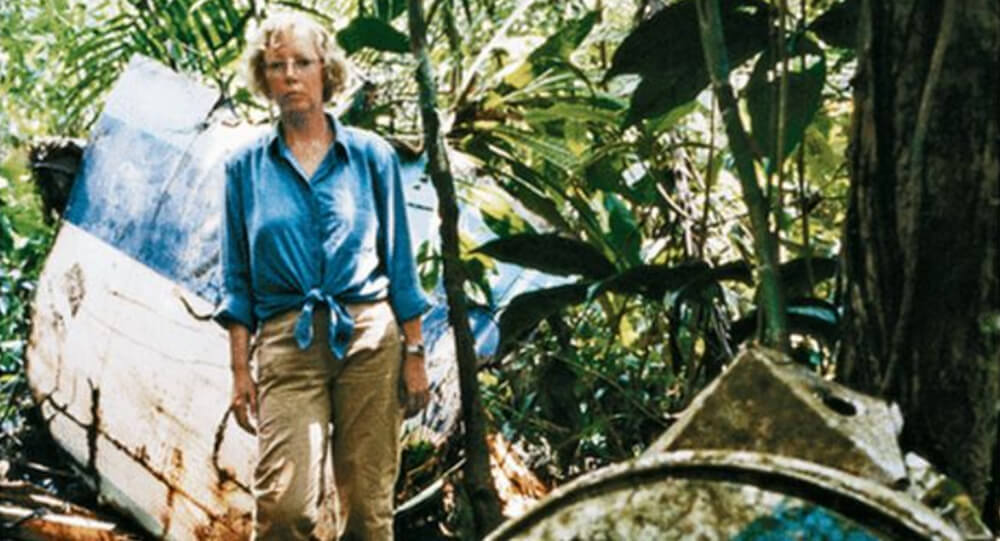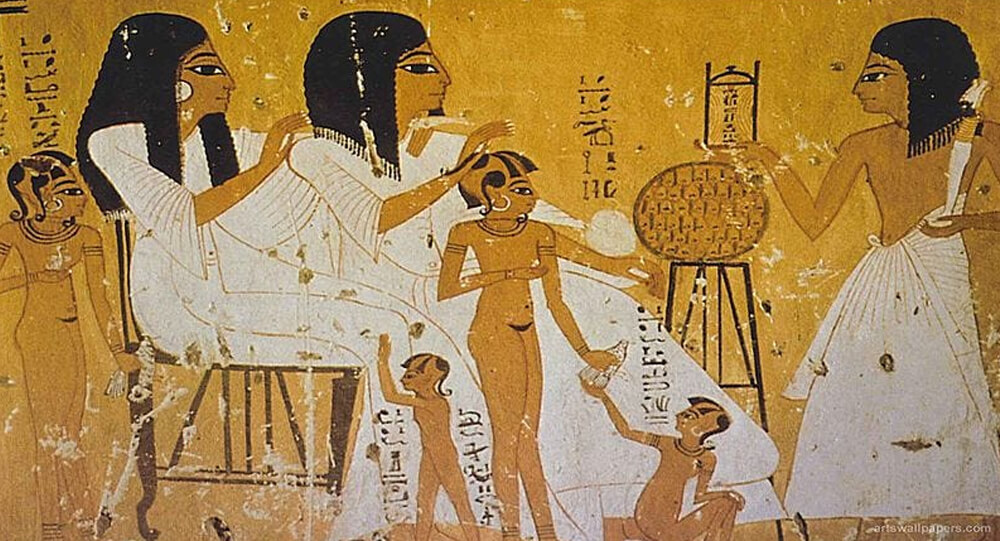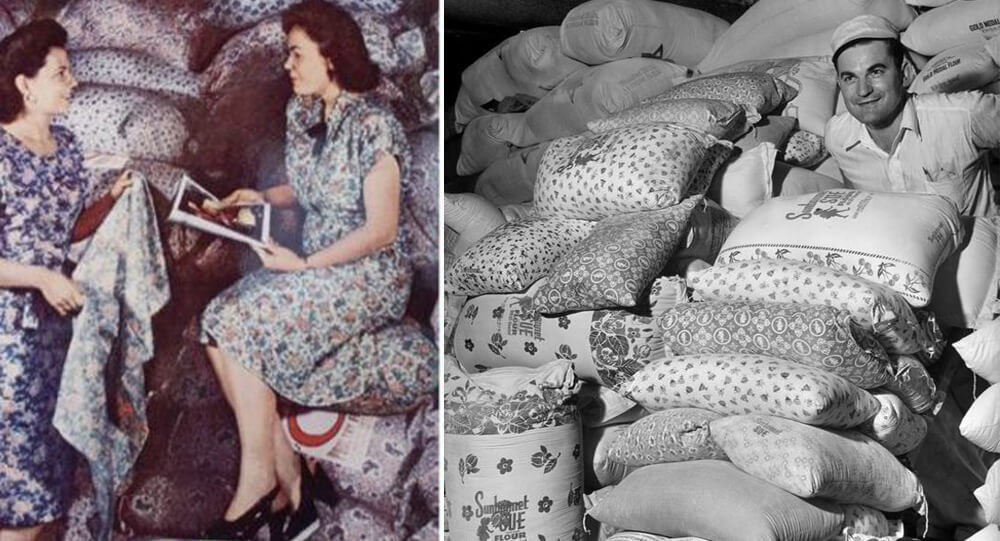
You might have seen a popular photograph of a man sitting cheerfully next to a pile of beautifully printed flour sacks, stating that the bags were used to make clothing for children in need. The short answer is that it is true! From the 1920s until the 1960s, flour sack attire was a common choice for many. But first, let’s look at the background of those pretty flour bags!
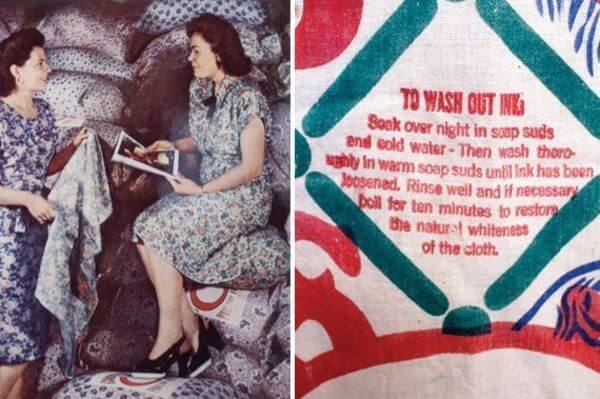
Let’s travel back to a time when saving money and frugality were the norm in support of the war effort. Young and old women wore these dresses. All of these gowns have an intriguing history, dating to a time when America was committed to recycling and the globe was at war.
Cotton: the flour holder
Beginning in the 1800s, cotton bags were used for the distribution of bulk goods like flour. To transfer more product, flour mills were able to give up wooden boxes in favor of the lighter cotton sacks. Not only did distributors find these cotton bags beneficial, but homemakers soon discovered a purpose for them as well.
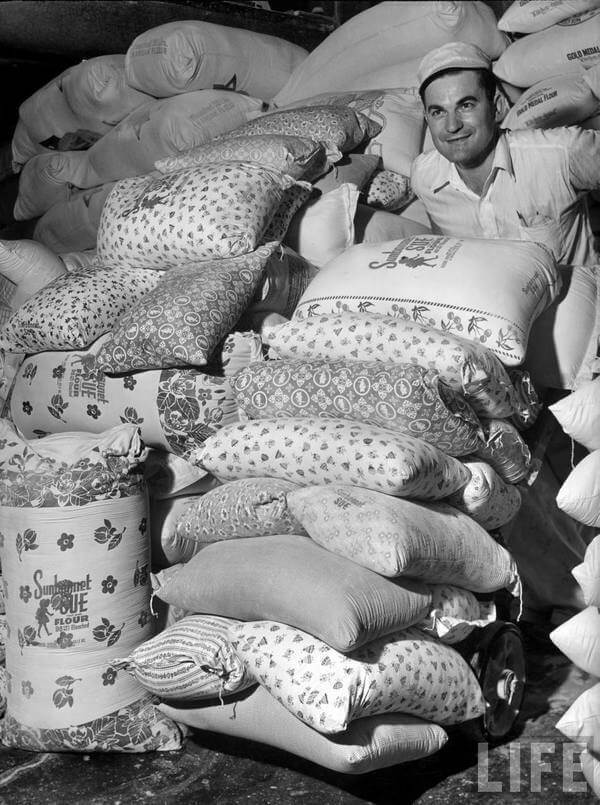
People started coming up with inventive applications for the excess fabric that was lying around the home and barns. The unsightly, simple bags were sometimes ripped into pieces and used in many homes as dish towels.
These simple cotton sacks would be in use until 1922, but their influence and value would last for a very long time. Millers believed that switching the cotton sacks out for paper cartons would be more practical, both for distribution handling and storage for the typical housewife, and on April 28, 1922, The Washington Post published an article titled “Farewell to the Old Flour Sack.”
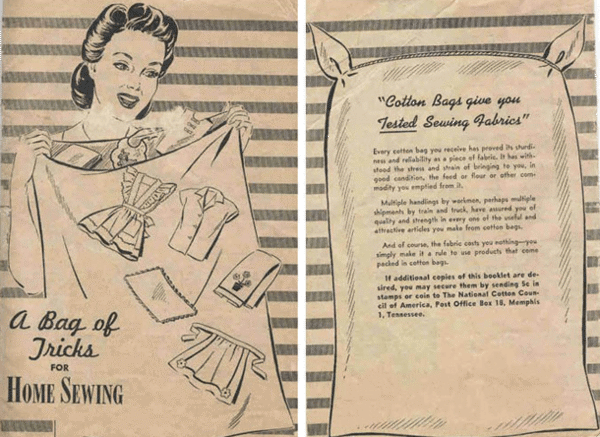
However, according to Feed Sack Secrets: Fashion from Hard Times, “both the city and country housewife would see the old flour sack in a new light in just a few short years. Thanks to a young guy by the name of Asa, changes were on the way. Bales, T.
Where flour sacks to pretty clothes started
In October 1924, Mr. Bales of Roscoe, Missouri, applied for a patent for cotton bags that had attractive patterns and were sizable enough to be used for apparel. Asa was specifically awarding his patent to the St. Louis-based George P. Plant Milling Co. for their new “Gingham” flour product. Different brands, such as “Gingham Girl,” “Mother Gingham,” “Baby Gingham,” and “Gingham Queen,” were created from the original line.

Plant Milling executives thought this was a fantastic marketing opportunity, since consumers would immediately recognize their brand when they saw the Gingham pattern. The indications on the package, such as the brand name, would wash away because the sacks were designed with clothing in mind, according to Bales’ patent. Specifically, this was done so that the cloth could be made into garments.
As soon as other mills learned about the strategy, they began creating their own chic packaging. The rival mills would engage in a contest to see who could create the most appealing pattern, using everything from pastels to novelty patterns.”
“A yard saved, was a yard gained towards victory”
When the United States entered World War II in the 1940s, Americans who were not on the front lines made sacrifices so that the soldiers would have food. The war effort received all of the cotton and wool that was available. Homemakers used the cotton sacks to produce apparel out of a desperate need for fabric. The flour sack dress evolved into a popular and fashionable garment. There were flour sack costumes everywhere you turned. There were even contests where ladies would compete and display their stitching prowess.

These costumes provided rural women with a cost-effective method to flaunt their sense of style. Before the 1960s, flour sack dresses were all the rage. We still recall the design of these recognizable gowns and the historical impact they have now!
Below are a few of the patterns that came from the bags:
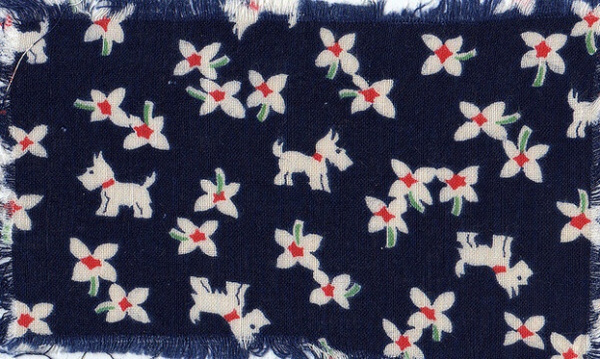
Lovely dog and flower pattern. Photo credit: archiveproject.com
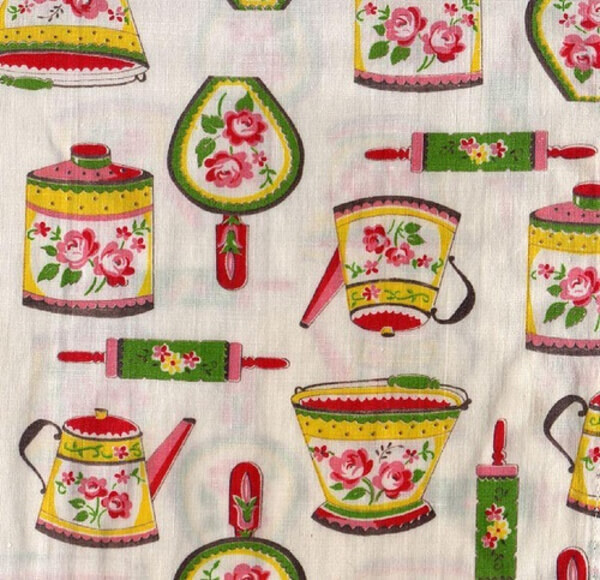
This fun pattern could have been used for all kinds of designs and garments. Photo credit: archiveproject.com
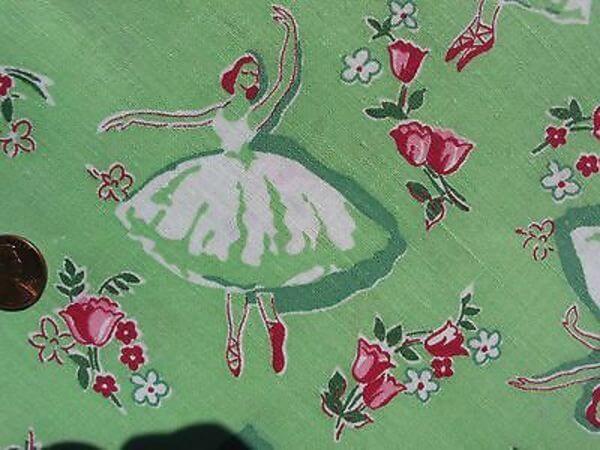
Here’s one of our favorite designs – this would have made a lovely dress! Photo credit: archiveproject.com

This phenomenon was so key to people in the Depression and post-war era that the Smithsonian even keeps a sack dress on display, as seen above. This dress was crafted in the 1950s as part of a bag sewing contest in Kansas. Photo credit: archiveproject.com

How Dmitri Mendeleev Developed the periodic table of the elements
1850 Dmitri Mendeleev walked almost a thousand miles to Moscow so he could apply for the University of Moscow. Although he was not accepted, he walked to St. Petersburg where he was accepted, And with that education, he developed the the periodic table of the elements

Thomas Baker's heroic act that earned him the "Medal of Honor" was 8 bullets until death
Thomas Baker instructed his team to leave him with a pistol and eight bullets propped up against a tree after he was injured. Later, American troops discovered the now-deceased Baker in the same location, lying next to eight dead Japanese soldiers and carrying an empty pistol.

Ea-Nasir: world's oldest written customer complaint
This clay tablet, written in cuneiform, is the oldest known written customer complaint about the delivery of poor quality copper ingots. Originally from ancient Babylon, the tablet dates back to 1750 BCE, and it was written by a customer named Nanni to a merchant named Ea-Nasir. It is currently housed in the British Museum.

Medals of Friendship: The Enduring Olympic Story of 1936
At the 1936 Summer Olympics, two Japanese pole vaulters named Sueo Oe and Shuhei Nishida tied for second, but they declined to compete against each other. As a result, Nishida was awarded the silver medal and Oe won a bronze medal. Upon returning to Japan, the athletes had their medals cut in half and spliced together to create new "friendship medals," which were half silver and half bronze.

Man's Blood Helped Save Millions of Babies
Australian blood donor James Harrison has been one of our most impressive and valued donors, having donated for 60 years. Know his story, how he was a pioneer of our Anti-D program, and why this matters.

Iranian inmate dies from happiness after finding out he will not be executed
An Iranian man who was convicted of murder reportedly died from happiness after learning that his death sentence was being commuted.

The true story Of The Radium Girls that change US labor laws
Hundreds of young women worked in clock factories during World War I, painting watch dials with luminous radium paint. The company lied about the risk of radiation, claiming there was no danger, which resulted in the death of the young women.

Martin Couney, Saved Thousands of Premature Babies Wasn’t a Doctor at All
Martin Couney never qualified as a medical doctor. However, in the 1900s, he saved thousands of premature babies by exhibiting them in incubators at his Coney Island sideshow. Over the course of his career, he is said to have saved about 6,500 babies that had previously been written off by mainstream medicine.

Will & William Wests: The puzzling situation of two inmates who are identical but not related
These are the mugshots of Will West and William West, and they are not related. They were both sent to Leavenworth Prison at the same time, in 1903, and after some confusion, the staff understood they had two different prisoners with the nearly same name, who looked exactly alike. They are part of the reason fingerprints are now used as identification.

Before Radar: How Giant Acoustic Mirrors Detected Enemy Aircraft in WWI and WWII
Long before radar revolutionized air defense, enormous acoustic mirrors and specialized sound locators stood as the first line of defense against enemy aircraft. Designed as giant “ears,” these structures amplified distant engine noises, allowing operators to detect incoming planes by sound alone. Dive into the intriguing world of these pioneering listening devices, their operation, limitations, and enduring legacy in military history.

The incredible story of a plane that lost its roof in mid-flight and the light signal that saved 94 lives.
On April 28, 1988, Aloha Airlines flight 243 was on the way to Honolulu from Hilo when a huge portion of the upper part of the fuselage blew off the airplane.

What Was the Beast of Gévaudan?
Between 1764 and 1767, a mysterious animal called the Beast of Gévaudan terrorized the French village called Gévaudan. It attacked and killed about 100 adults and children. While most believe it was a wolf, some say it may have been a wolf-dog hybrid, hyena or even a lion, but without any genetic evidence, the beast will remain a mystery forever.

Archaeologists Uncover 2,000-Year-Old Amazonian Cities Using Lidar Technology
Deep in the Ecuadorian Amazon, archaeologists have uncovered an ancient network of urban settlements once inhabited by the Upano people about 2,000 years ago. Using cutting-edge lidar technology, these discoveries reveal a highly organized society featuring sophisticated agricultural systems, drainage canals, and extensive road networks. This transformative find challenges long-held assumptions about ancient Amazonian societies and sheds light on a complex civilization thriving in one of the world’s most biodiverse regions.

Juliane Koepcke: The Teenager Who Fell 10,000 Feet And Trekked The Jungle to survive
In 1971, a high school student was sucked out of an airplane after it was struck by lightning. She fell 10,000 feet to the ground while still strapped to her chair and survived. Only to endure a 9-day trek to the nearest civilization.

Roller Coasters were First Invented to Distract People from sin
Roller coasters were invented to distract Americans from sin. In the 1880s, hosiery businessman LaMarcus Thompson didn’t like that Americans were going to places like saloons and brothels and created the first roller coaster on Coney Island to persuade them to go there instead.

Ancient Egyptians Had Pregnancy Tests Over 3500 Years Ago
The ancient Egyptians used a pregnancy test that involved potentially pregnant women peeing on barley and wheat seeds. Plant growth indicated pregnancy: barley for a boy and wheat for a girl. Later tests revealed that pregnant women's urine causes plant growth 70% of the time, whereas non-pregnant women's urine does not.

What is the story behind Wrigley chewing gum?
Wrigley's was originally a soap company that gifted baking powder with their soap. The baking powder became more popular than the soap so they switched to selling baking powder with chewing gum as a gift. The gum became more popular than the baking powder so the company switched to selling gum.

The Tragic Story Of Mary Ann Bevan, The ‘Ugliest Woman In The World’
After the death of her husband, Mary Ann Bevan had no income to support herself and her children. She then decided to enter a contest where she won the title of “ugliest woman” and was later hired by a circus. She endured this ridicule from the world to provide for her family.

Reason Behind The Suicide Of Christine Chubbuck Live On Air
Actor Rebecca Hall had serious reservations about tackling the macabre story around why Chubbuck killed herself in 1974. So what changed her mind?

From Flapper to Fashion Week: How 1920s Style Still Shapes Modern Trends
The roaring 1920s revolutionized fashion, introducing bold styles, daring cuts, and a spirit of freedom that still inspires today’s wardrobes. From flapper dresses to statement accessories, here’s how the Jazz Age lives on in modern fashion.

Marion Stokes recorded 30 years of television
Marion Stokes, a Philadelphia woman began taping whatever was on television in 1979 and didn’t stop until her death in 2012. The 71,000 VHS and Betamax tapes she made are the most complete collection preserving this era of TV. They are being digitized by the Internet Archive.

Did Gil Pérez Really Teleport from Manila to Mexico Overnight? The 1593 Mystery
On October 24, 1593, while performing his guard duties at Manila's Governor's Palace in the Philippines, Gil Perez stopped to lean against a wall and sleep for a while. He opened his eyes to find himself in an unusual environment. Gil was in the Plaza Mayor in Mexico City. They imprisoned Perez, but the authorities in Mexico City decided to release him and return him home.

The Forgotten Story of Semipalatinsk and the Soviet Nuclear Experiments
Between 1949 and 1989, the Semipalatinsk Test Site in Kazakhstan became the primary location for Soviet nuclear weapons tests, exposing millions of unsuspecting villagers to radioactive fallout. Known as the “Polygon of Suffering,” this remote desert witnessed 456 nuclear detonations that caused widespread health crises, birth defects, and generational genetic damage. This article narrates the chilling legacy of Semipalatinsk, unveiling the human cost of Cold War arms development and the ongoing struggle for healing and recognition in Kazakhstan.

Jack the Baboon operated a railroad, earned a living, and never made a mistake
A baboon worked as a signalman for the railroad in the late 1800s. He never made a mistake and worked for the railroad until the day he died.

Franz Ferdinand’s Assassination that sparked World War I
Archduke Franz Ferdinand of Austria and his wife Sophie are shot to death by a Bosnian Serb nationalist during an official visit to the Bosnian capital of Sarajevo on June 28, 1914. The killings sparked a chain of events that led to the eruption of World War I by early August.



